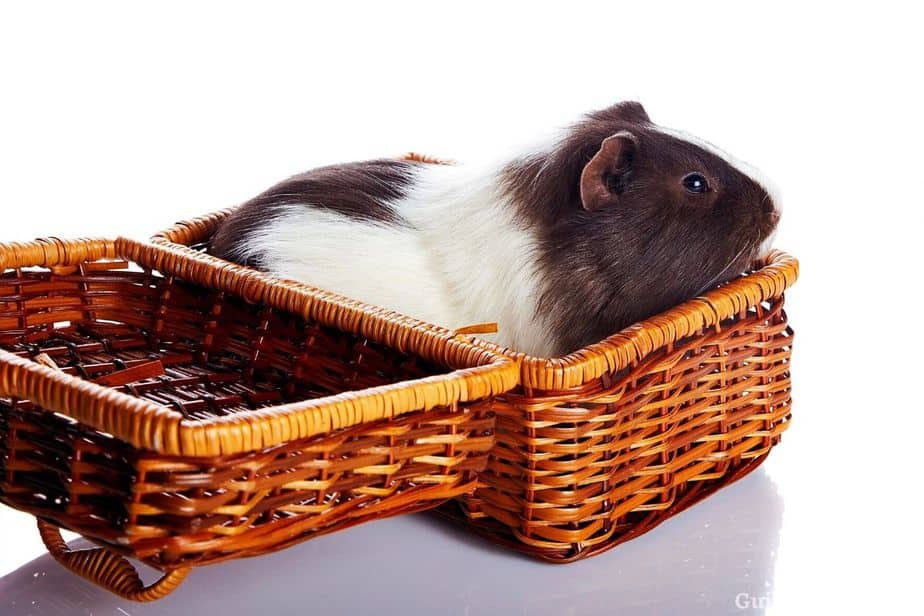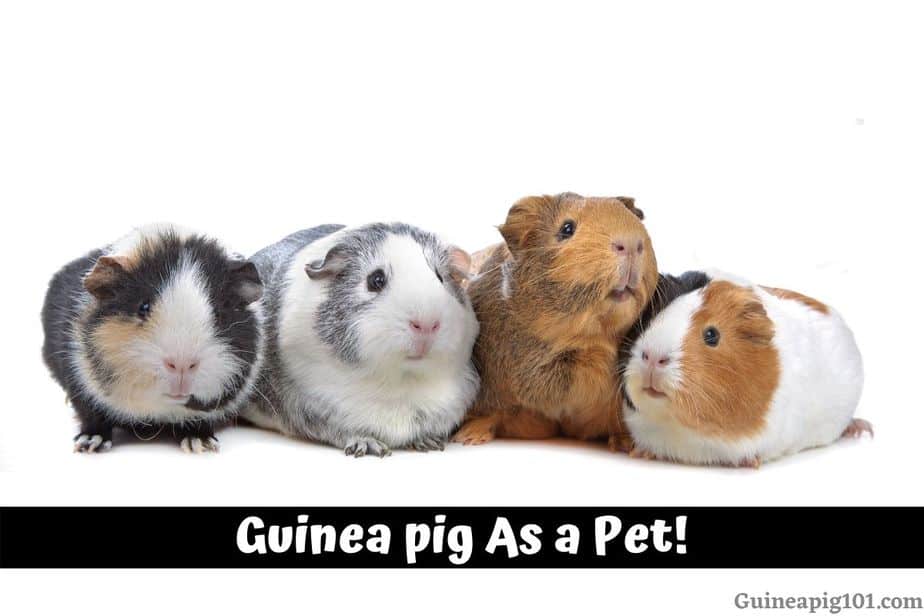Are you considering to get Guinea pig as a pet?
If yes, then you must first consider taking care of these 4 basic essential before you get them home.
The guinea pig is the perfect animal to have at home. They are easy to take care of although they need our company and they cannot spend much time alone.
Today guinea pigs are in many houses a member of the family and the most adored pet because they are the smallest of the home.
This rodent originates from the colonies of the Andes and is larger than a hamster. It can weigh up to 1000-1300 grams – and it has great charisma, but it needs a lot of care that we will explain to you.
If you have not gone through our article on Basic Guinea pig information guide, I would recommend you to read that first so that you have the basics cleared.
There are two categories of this species of rodent, depending on the type of coat that covers them. You will be able to easily distinguish between those with short hair and those with long hair.
Species of Guinea pig to choose from
In the short-haired guinea pigs, we find a very smooth and soft touch. We can further distinguish several species depending on their color and texture.
- A tricolor Guinea pig, in which their fur is divided between white, brown and black.
- Dutch Guinea pig because a line is formed that crosses all its back as if it were a flag of this country.
- Himalaya Guinea pig as they are light in color but with the tips of the ears and extremities the colored black, as if it were the mountain range.
- Dalmatian Guinea pig of the same color and fur as the dog breed i.e White fur with black spots onto them.
On the other hand, in long-haired guinea pigs, we find much more texture and shape in the coat that surrounds them. The most common species being Shelties, Peruvians, and Tisilares.The Shelties have a long, straight hair that is very close to the body as if it were a Yorkshire.
- The Shelties have a long, straight hair that is very close to the body as if it were a Yorkshire.
- The Peruvians have a very crazy hair that goes towards all directions, forming eddies.
- Lastly, the Tisilares have curly hair.

Before you get your first Guinea pig as a pet you must consider the level of difficulty both types have. Where the short haired are Easy to groom and take care of. The long hair species are more difficult to handle and groom. We will also publish an in detail guide soon about caring tips for both of them.
Now with that out of the way let us learn about the other 3 most essential things to take care of before you get your first Guinea pig as a pet.
HABITAT OF THE GUINEA PIG
Guinea pig natural Habitat
Before choosing a guinea pig as a pet, we must know its characteristics in its natural habitat. So, that we can give it the best care as a pet and to be as happy as possible with us. That is why we should know that the guinea pig in the wild is an animal that lives in large colonies.
They are used to the company of its people in large numbers. When buying a guinea pig as a friend in our home we must consider that too. If possible, buy more than one Guinea pig so that they do not feel very lonely.
If we decide to acquire a pair of guinea pigs, the best we can do is to catch a female and a male. Even if it means possible reproduction and future offspring. If it is not possible, we should choose two females before two males, to avoid conflicts.
In the event that we cannot have a partner and only opt for a copy of this magnificent pet. We must bear in mind that it requires our constant company, and does not like to spend large periods of time alone.
Guinea pig habitat in our home
Before we get one Guinea pig as a pet I must consider a space within our home as this pet needs a large space with special features. The cage should be at least 90 centimeters wide so that it takes place to develop its activities and can move easily.
Inside the cage, you must have your feeder and your drinker. In addition to a small hiding place where you will spend your hours of sleep. The floor must be covered with shavings or in its absence pressed paper and with a height of 3 centimeters so that it is comfortable.
We also have to take into account the place in the house where we put the cage since the guinea pig is an animal very apprehensive to temperature changes. Especially when they are low, so we should have it at an average temperature of 18-24 degrees and where there are no drafts.
Putting him in a cage does not mean he has to be there all the time, but quite the opposite. The guinea pig needs high doses of physical activity since it has to control the weight. So it should leave a few hours a day to run around the house or any open area.
Feeding
The guinea pig is a herbivorous animal, so it only eats fruits and vegetables. Above all you need high doses of essential vitamin c, so we will give you the ones that have more nutrients of this type, and if necessary, extra doses of the vitamin.
If we decide to give him special feed for guinea pigs we should know that this one already contributes the necessary levels so that he has an iron health. In addition to the vitamin, the guinea pig needs fiber on a daily basis, so it is also good to give hay, one of your favorite foods.
What you should never miss the guinea pig is a water dispenser so that it is always well hydrated, even some people include two dispensers so they never lack liquid.
It is important to note that when you get a Guinea pig as a pet you have a responsibility to take care of it. You cannot miss to provide them with fresh water and day daily as those are the basics. The food and water must be provided at least twice a day. If needed you can supplement vegetable in the evening so that they get a balanced diet.
GUINEA PIGS HEALTH AND OFFSPRING
Health issues in Guinea pigs
Guinea pig as a pet does not have major health problems due to its physical characteristics. So visits to the veterinarian will be in most cases for routine reasons to check that everything is correct.
This will happen if you follow the recommendations of habitat and feeding that we have commented previously:
- Correct adaptation of the new animal to the house when it arrives.
- Provide them with a balanced diet of food and water.
- Let them do the exercise & sports on daily basis.
- Keep their housing clean and tidy.
- Wash them once a month and to brush them with regularity. Especially if it is a race with characteristics of long hair, as this will eliminate dead hairs.
Guinea pig life expectancy

The life expectancy of the guinea pigs is from 4 to 6 years. But sometimes it can live up to 14 years of age if given proper care. They do not get too big in size, so it can become the first ideal pet for the little ones in the house. Guinea pig as a pet get along very well with the children; it is enough that they are treated with care especially when it comes to picking them up because they are very scary. If we choose the guinea pig as a companion animal we must teach our children that they are not a toy, but a living being.
Guinea pig offspring
The guinea pig females usually have between 2 and 4 calves at birth, but they are large. This can become a problem if the female has not had any parturition before 11 months of age of calves, due to the large size of the offspring. So the ideal time is at 8 months, although they are already in gestation age from 4months itself. If you are breeding them you must also understand that the need for the babies would be quite different and you must provide them with the basic essentials they need in time to come.
Guinea pig as a pet is a great option to start with if you can dedicate a little time to them and are ready to take their responsibility. I would suggest you learn a little more about them before you get yourself one. If you have any queries regarding the same do let me know in the comment section below.
